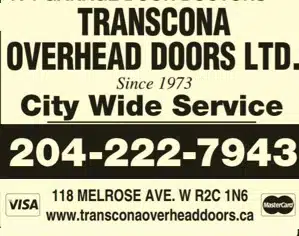
I bet that most hockey fans at one point or another were also hockey card enthusiasts. I still lament the loss of the box of early 80’s hockey cards that my mom claims she never misplaced. I remember the excitement I felt when I bought a pack of Canadian Score cards and pulled an Eric Lindros rookie. And I remember the aggravation I felt when I realized I had been ripped off for the first time. (bought a fake Bobby Orr card).
This is the first in a two part series on hockey cards and the hockey card industry. We are lucky to be joined by Jeremy Lee, a 30 year hobby veteran from Winnipeg who currently resides in Calgary and is at the forefront of a movement to ensure that the integrity of the industry is maintained. The main focus of his collection is on rookie cards; 95% of which are hockey and the rest from the other three major sports.

Q & A with Jeremy:
1. How did you get involved in hockey card trading?
Back in 1979 I was visiting my older cousin in Winnipeg. He was nine years old and had a pile of hockey cards in his room. I thought they were so cool since I had been going to WHA games with my dad in those years and there was a card of Bobby Hull in his Winnipeg Jets uniform. This was from the 1979-80 OPC set also known as the Gretzky Rookie set. Needless to say, I was hooked.
2. Are my hockey cards that I collected in the mid 80’s/early 90’s worth anything? I am pretty sure I have a sealed box of 1991 Upper Deck High Series somewhere.
In one word, no. However, I will qualify that by saying that if you have certain cards from the mid – late 80’s like a Lemieux, Roy or Brett Hull rookie card that is in Gem Mint condition, then you do have something that could be very valuable. The problem with cards of the 80’s was that even out of the pack, they were rarely in mint condition because the cutting blades that O-Pee-Chee used would get dull and there would be rough cuts along card edges. The other big issue was that the card images were often not centered well on the cards themselves. These flaws greatly reduce a cards value. Lastly, production was very generous in those days and the resulting perception, which is somewhat accurate, is that people who want cards from that era already have them making it harder to realize top dollar for them today. But like I said, if you have a card that would be graded as Gem Mint or Pristine, then you do in fact have a specimen that could realize upwards of $1000.
The early 90’s were altogether different. This was the era of mass production. The hobby was booming and card companies ran the presses 24/7. Cards from this era, aside from a few very limited edition cards, are close to worthless on the secondary market. For example, if you try to sell a rookie card of Teemu Selanne or Niklas Lidstrom on eBay, it likely will not sell for even a penny because people don’t want to pay the shipping costs. While this is unfortunate from an investment perspective, it certainly makes these cards easily accessible for young and novice collectors, which is very important for the hobby. Considering these guys are future Hall of Famers, it is a great way to start building a collection.
3. How would you compare hockey card collecting today to collecting hockey cards 10-15 years ago? I remember in the early 1990’s it seemed like every corner had a hockey card store. Around 1995 it seemed like all but the long established stores disappeared. Was this trend continued with hockey card trading as well?
The hobby has undergone tremendous transformation since the early 90’s. Back then, cards were simple; they had a picture on the front, perhaps another picture on the back along with some stats. Today’s cards often have, in addition to a picture or two, an actual autograph, a swatch from the players jersey and/or a piece of stick/puck/glove etc. Cards today are often serially numbered too so that people know exactly how many copies were produced. Print runs range from around 2000 copies down all the way to one. These “1 of 1’s” can carry huge premiums and are very popular with “player collectors”.
In the early 90’s, people thought they were making shrewd investments in cards only to later realize that their cards were worth so little due to the mass production of the era. This led to disappointment with the hobby and many people left it completely. So, several hobby shops were forced to follow as their customer base dwindled. The mid to late 90’s was a transitional period in the hobby when only the hard-core collectors remained interested and active. But in 1998, Upper Deck introduced limited edition, serially numbered rookie cards for the first time. This new feature attributed inherent value to rookie cards which are the main driver of the hobby. They started with 2000 copies of each rookie card and by 2002-03, this number had fallen to as low as 99 copies, the minimum print run for a card to be recognized as an official rookie card. Innovation led to additional enhancements to rookie cards. In 2001-02, they started adding autographs to the rookie cards and in 2002-03 they added patches from the logos on player jerseys. This became and has remained the pinnacle of rookie cards – the “serially numbered auto/patch”.
Another interesting point is that in the early 90’s, Upper Deck along with Topps, Score and Pro-set each issued one set/brand per year with perhaps an update set added on towards the end of the season. But now, Upper Deck (as the exclusive licensee) produces over 20 sets/brands per year. They range from $2 to $400 per pack! As a result, collectors of all levels of income can dabble in low, mid or high-end product.
4. Do you think that change is for the better?
These changes that the hobby has undergone since the early 90’s are simply its natural evolution. Collectors are a fickle bunch and we always want to see innovation; the next big thing. Upper Deck has led the way in terms of innovation. The auto/patch rookie card was the last major overhaul to the rookie card, and the hobby is currently speculating as to what the next step in the evolution will be. There are different views of how good or bad these changes have been. Many people feel that the collecting of cards has disappeared and been replaced by investing and speculating. While there is a degree of truth to this, I argue that there are still many true collectors out there who enjoy building their collections for the sake of collecting. Upper Deck produces sets/brands at various price points to ensure that their customers who are young kids to those who are more advanced collectors, have a product available that interests and excites them. My personal opinion is that the changes have been good.
5. Where do you go to get your hockey card information? I used to get my prices from the Beckett. Is that still around?
Yes Beckett is still around. The problem with their magazine’s price guide is that the values are often far from indicative of a cards fair market value. With the proliferation of sets issued each year, there is no way they can accurately capture the fair market value of even the most important cards. As well, since so many cards are limited to 25 or fewer copies, Beckett avoids the challenge of pricing them by designating them as “Not priced Due to Scarcity”. Considering that these cards are those that are most desired by collectors, Beckett’s price guide has become close to obsolete. The best source for hockey card information is online. If you want to know the current fair market value of a card, go to eBay and do a completed items search. If you want to see what other collectors are saying, there are several online forums, my favourite being hobbyinsider.net. Most cities also have annual or even monthly card shows. I encourage people to check one out to see what is new, old and everything in between. Upper Deck’s website also provides a multitude of information and checklists of all their brands.
6. I remember a big trend when I was collecting was to buy a “pack” of hockey cards but keep them sealed. Is this still done? Does this in fact increase the value of the cards? A few years back an Uncle of mine found an unopened pack of 1976 O-Pee-Chee cards. I told him not to open it. But curiosity got the better of him and he opened it so he could distribute it to his nephew’s. How much would a pack of 1976 cards be worth considering that most people weren’t “saving” packs until the 1980’s?
This is actually an interesting area of the hobby and one that I am personally focused on. An unopened pack of 1976 OPC cards is probably worth around $40 today. But if you open it, you may only get $2 worth of cards, if they are all commons. Value is attributed to vintage unopened packs based on the cards that might be in there. For example, an unopened pack of 1979 O-Pee-Chee cards, that may have a Gretzky rookie card inside worth around $600, commonly sells for $250. But you may only get $2 worth of cards. I collect unopened packs because I like the artwork and they conjure up memories from when I used to go to the corner store and buy handfuls of them and bust them open for trading. A lot of the value attributed to unopened packs is driven by the memories they conjure in people who used to collect them as kids some 30 years prior.
7. Are hockey card conventions still popular?
Not like they were in the early 90’s when you had to shove your way through to see the tables. These days the shows are less crowded but those that do attend are more “collector”, than “trendy”. Twice a year, there is the Sportcard and Memorabilia Expo in Toronto (www.sportcardexpo.com). This is the mecca for hockey card and memorabilia collectors alike. Its attendance has gone down since the late 90’s but considering the current economic climate, this is natural. I think that once the economy bounces back and people allocate more of their income to their hobbies, we will see the Expo’s and other local shows attendance grow. In Western Canada there are the Bossa Shows (www.bossashows.com) which always seem to feature great autograph signers. I attend most of the major shows across the country mostly because I enjoy being around people who share my passion for hockey cards, and I increase my chances of finding cards that are on my wantlist.
8. What is the best card collecting trade you ever made? What was the worst?
That’s a tough question, since I’ve made so many. What I will tell you is that the best trades are those where both parties ignore the price guide and just make a trade where they both get the cards they want. If two collectors are happy with a trade, who really cares what the price guide says. One of the things that bothers me most is when a collector or a dealer refers to the price guide when asked about a card. Now if the price guide actually reflected fair market value, I wouldn’t mind so much. But it doesn’t. One of the problems in the hobby is that many dealers use the Beckett price guide to price their cards. But everyone knows that cards can be had cheaper on eBay. This is hard for stores who have overhead costs that are significant compared to casual eBay sellers and even more professional eBay stores. The stores need to charge more and eBay savvy collectors are often unwilling to pay the “Beckett” prices. But I will say that the experience of going to the hobby shop and being able to inspect the card instead of just looking at a picture on your monitor is often worth a premium. And some people are simply sceptical of eBay and prefer not to use it. Additionally, cards can get lost in the mail and by buying from a shop, you eliminate that risk and the transit time. However, coming home from work or school to find a bubble mailer or two in your mailbox is a favourite thrill of collectors.
9. What is your most prized card?
It is almost impossible to narrow it down to one so let me give you two, you’ll see why. In 1989, when I was 17 years old I saved up $800 and bought a Bobby Hull rookie card from 1958. This is still my favourite card because I’ve had it for so long and it was the first major acquisition I ever made. A couple years ago I acquired a 1911 Georges Vezina rookie card that is professionally graded as a PSA 5. PSA (Professional Sports Authenticator, www.psacard.com) is the hobby’s most respected and relied upon third party grader and authenticator. A grade of five is referred to as “Excellent”. And considering that this card is from 1911, this is a phenomenal grade. The Vezina rookie is considered by many to be the holy grail of hockey cards so it is my second favourite card behind the Bobby Hull.
10. How has the internet opened up the availability of rare cards? (this question will lead into next week’s article)
The internet and specifically eBay has had a monumental impact on the hobby. and collectors’ ability to locate and acquire all cards, not just rare ones. Before the internet, it could take years to locate a specific card. Nowadays, shortly after a set’s release, most cards are listed on eBay and made available to the whole market. Even vintage cards are easy to find. eBay really has transformed the hobby and is partially responsible for the closing of several hobby shops. While this is unfortunate, it ensures that the strongest shops have survived and hopefully they continue to thrive.
Next Thursday we will focus on the facet of the hobby that Jeremy is playing a major role in; to help create a reliable means of maintaining the integrity of the hobby.




